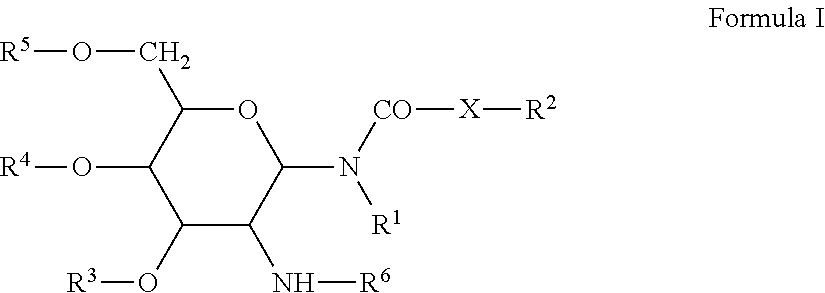Oil-based adjuvants
- Summary
- Abstract
- Description
- Claims
- Application Information
AI Technical Summary
Benefits of technology
Problems solved by technology
Method used
Image
Examples
example 1
Development of Recombinant Vaccination Strategy to Enhance Immunity Against Necrotic Enteritis
[0324]The aim of the study was to evaluate the effects of in vivo vaccination with adjuvanted recombinant clostridia vaccine against live challenge infection with Eimeria maxima and Clostridium perfringens in Necrotic Enteritis Disease Model.
Materials and Methods
[0325]Recombinant Proteins:
[0326]Full-length coding sequences for genes encoding C. perfringens (ATCC 13124, American Type Culture Collection, Manassas, Va.) NetB and EF-Tu were cloned by PCR into the pET32a(+) vector with an NH2-terminal polyhistidine epitope tag. Cloned genes were transformed into competent Escherichia coli, the bacteria were cultured for 16 h at 37° C., and induced for 5 h at 37° C. with 1.0 mM isopropyl β-D-thiogalactopyranoside (Amresco, Cleveland, Ohio). Bacteria were harvested by centrifugation at 10,000 rpm for 10 min at 4° C., resuspended in PBS, disrupted by sonication, and centrifuged at 10,000 rpm for 15...
example 2
Hen Anti-Myostatin Vaccine
[0353]Myostatin is a secreted growth differentiation factor that is a member of the TGF beta protein family that inhibits muscle differentiation and growth. Myostatin is produced primarily in skeletal muscle cells, circulates in the blood and acts on muscle tissue, by binding a cell-bound receptor called the activin type II receptor. Accordingly, inhibition of myostatin results in animals having an increased amount of meat / muscle. One approach to lowering the amount of myostatin in an animal is to generate an anti-myostatin immune response, which can be conveniently measured by the titers of anti-myostatin antibody. In this example, a hen model was used.
[0354]Cobb 500 Parent Stock and Ross 308 hens (age 12 to 10 weeks, respectively) were primed with a vaccine containing Myostatin Conjugated Peptide and an adjuvant formulation. The adjuvant formulations used in the study are shown in Table 5.
TABLE 5Treatment groups.TreatmentAdjuvantCarrierDoseT01CFA / IFACRM50...
example 3
Vaccines Against T. pyogenes
[0358]Truepurella pyogenes (formerly Arcanobacterium pyogenes, and formerly Actinomyces pyogenes and also Corynebacterium pyogenes) often cause severe clinical metritis in cattle characterized by thick, purulent secretion. The foul odor sometimes associated with this condition is probably caused by anaerobic bacteria that are also present but not detected by routine cultural methods. The disease is most frequent in dry cows or heifers before or at the time of calving, and occasionally occurs in lactating animals as a sequel to teat or udder injury. Economically important diseases caused by this organism include metritis, and abortion in dairy cows and liver abscesses in feedlot cattle. Pyolysin (PLO), a cholesterol-dependent cytolysin expressed by Truepurella pyogenes, is an important host-protective antigen.
[0359]Angus crossbred cattle of approximately 14 months of age were used in this study. Animals were in overall good health and free of any complica...
PUM
| Property | Measurement | Unit |
|---|---|---|
| Fraction | aaaaa | aaaaa |
| Fraction | aaaaa | aaaaa |
| Fraction | aaaaa | aaaaa |
Abstract
Description
Claims
Application Information
 Login to View More
Login to View More - R&D
- Intellectual Property
- Life Sciences
- Materials
- Tech Scout
- Unparalleled Data Quality
- Higher Quality Content
- 60% Fewer Hallucinations
Browse by: Latest US Patents, China's latest patents, Technical Efficacy Thesaurus, Application Domain, Technology Topic, Popular Technical Reports.
© 2025 PatSnap. All rights reserved.Legal|Privacy policy|Modern Slavery Act Transparency Statement|Sitemap|About US| Contact US: help@patsnap.com



